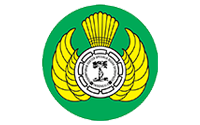LONG TERM FUNCTIONAL EVALUATION AUTOFIBULAR STRUT GRAFT IN CASE OF FRACTURES NECK FEMUR IN RSUD DR SOETOMO SURABAYA
Downloads
Background: Neck femur fracture has a poor prognosis due to its anatomical structure. Fractures that occur in the elderly often have a heavy comorbid so that the mortality rate in 1 year in this case reaches 30-50%. The techniques that have been developed at this time are not satisfactory results with non-union rate of about 30%.
Purpose: Assessing the long-term effectiveness of fibular auto strut graft techniques for neck femoral fracture therapy.
Methods: The study was conducted retrospectively using primary data in the form of clinical evaluation and secondary data in the form of medical record data and questionnaires of neck femur fracture patients who performed non-vascularized autofibular strutgraft therapy in the period January 2005 to August 2015 in operating room IRD RSUD Dr. Soetomo Surabaya. Patients were evaluated with Harris Hip Score.
Result: Medical record data shows that surgery was performed in January 2005 until August 2015 in the IRD hospital operating room. Soetomo Surabaya with 15 patients that fit criteris inclusion. The final result of Harris Hip Score is excellent in 66.66% of patients, good in 20% of patients, and poor on 13.33% of patients. It can be seen that in large part, the technique of autofibular strutgraft (Surabaya Technique) gives good results to the sufferer.
Conclusion: Autofibular strutgraft and reinforcement with cancellous lag screw on neck femur fracture can generally provide good functional results in long term evaluation. From the assessment of functional aspects, abnormal anatomical conditions, and Range of Motion (ROM), obtained satisfactory results. This supports autofibular strutgraft as a neck femur fracture therapy as a major therapeutic option at a young age.Beaty JH. Leighton RK, Fractures of the Neck of the Femur. Rockwood and Green's Fracture in Adults, 6th edition, 2006, Lippincot William and Wilkins, pp 1754-1788
Nayagam S, Injuries of the Hip and Femur. Apley's System of Orthopedic and Fractures. Hodder Arnold, London, United Kingdom 2010 pp 843-874
Nagi ON, Gautam VK, Marya SKS, Treatment of Femoral Neck Fractures with A Cancellous Screw and Fibular Graft. The Journal of Bone and Joint Surgery. Vol 68B No 3 May 1986. Pp 387-391
Nagi ON, Dhillon MS, Aggarwal S. The Long Term Fate of the Fibula when Used as Intraosseus Graft. Acta Orthop Belg 2004. 70. 322-326
Roshan A, Ram S, The Neglected Femoral Neck Fracture inYoung Adults: Review of a Challenging Problem. Clinical Medicine & Research. Volume 6, Number 1:33-39
Zahid M, Sabir A, Asif N, Julfiqar M, Khan AQ, Ahmad S, Siddiqui YS. Fixation using cannulated screws and fibular strut grafts for fresh femoral neck fractures with posterior comminution. Journal of Orthopaedic Surgery 2012;20(2):191-5
SidhuMS, Mann HS, Tanwar YS, Kumar A, Sidhu GDS. Fibula - A
Bone With Versatile Uses. Pb Journal of Orthopaedics Vol-XII, No.1,
Sjarwani A. Fibular Autostrutgraft as the Option of the Femoral Neck Fractures in Surabaya. Folia Medica Indonesiana Vol 44 no 3 July-September 2008: 188-195
Stannard JT, et. al. Lower Extremity and Pelvis Trauma in Miller's Review of Orthopedic. 5th edition. Saunders Elsevier, Philadelphia, USA 2008. Pp. 601-634 Susan M. Day, et al. Bone Injury, Regeneration, and Repair in
Orthopaedic Basic Science. American Academy of Orthopaedic Surgeons. 2004. Chapter 14. Pp 373-399
Duanyang Han, et al. A Novel Specialized Staging System for Cancellous Fracture Healing, Distinct from Traditional Healing Pattern of Diaphysis Corticalfracture? Int J Clin Exp Med. 2015. 8(1):1301-1304
Olsson O, et al. Extracapsular Hip Fractures: Fixation with a Twin Hook or Lag Screw? International Orthopaedics (SICOT). 2000. 24:249-255
Gupta A. The management of ununited fractures of the femoral neck
using internal fixation and muscle pedicle periosteal grafting. J Bone Joint Surg [Br] 2007;89-B:1482-7.
Finkemeirer G Christopher, Current Concepts Review: Bone-Grafting,
and Bone-Graft Substitute. University of California Davis Medical Centre, Sacramento, California.The Journal and Bone and Joint Surgery, 2002.
Copyright (c) 2018 Journal Orthopaedi and Traumatology Surabaya

This work is licensed under a Creative Commons Attribution-NonCommercial-ShareAlike 4.0 International License.
- The author acknowledges that the copyright of the article is transferred to the Journal of Orthopaedi and Traumatology Surabaya (JOINTS), whilst the author retains the moral right to the publication.
- The legal formal aspect of journal publication accessibility refers to Creative Commons Attribution-Non Commercial-Share Alike 4.0 International License (CC BY-NC-SA).
- All published manuscripts, whether in print or electronic form, are open access for educational, research, library purposes, and non-commercial uses. In addition to the aims mentioned above, the editorial board is not liable for any potential violations of copyright laws.
- The form to submit the manuscript's authenticity and copyright statement can be downloaded here.
Journal of Orthopaedi and Traumatology Surabaya (JOINTS) is licensed under a Creative Commons Attribution-Non Commercial-Share Alike 4.0 International License.



























 Journal Orthopaedi and Traumatology Surabaya (JOINTS) (
Journal Orthopaedi and Traumatology Surabaya (JOINTS) (